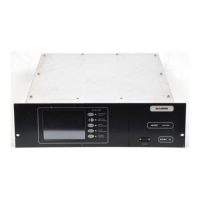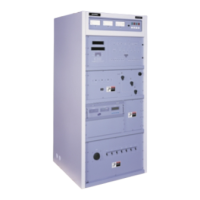1
TM
Electrostatic Discharge Control: A Guide To
Handling Integrated Circuits
This paper discusses methods and materials recommended
for protection of ICs against ESD damage or degradation
during manufacturing operations vulnerable to ESD expo-
sure. Areas of concern include dice prep and handling, dice
and package inspection, packing, shipping, receiving, test-
ing, assembly and all operations wurhere ICs are involved.
All integrated circuits are sensitive to electrostatic discharge
(ESD) to some degree. Since the introduction of integrated
circuits with MOS structures and high quality junctions, safe
and effective means of handling these devices have been of
primary importance.
If static discharge occurs at a sufficient magnitude, 2kV or
greater, some damage or degradation will usually occur. It has
been found that handling equipment and personnel can gen-
erate static potentials in excess of 10kV in a low humidity
environment; thus it becomes necessary for additional mea-
sures to be implemented to eliminate or reduce static charge.
Avoiding any damage or degradation by ESD when handling
devices during the manufacturing flow is therefore essential.
ESD Protection and Prevention Measures
One method employed to protect gate oxide structures is to
incorporate input protection diodes directly on the monolithic
chip. However, there is no completely foolproof system of
chip input protection in existence in the industry.
In areas where ICs are being handled, certain equipment
should be utilized to reduce the damaging effects of ESD.
Typically, equipment such as grounded work stations, con-
ductive wrist straps, conductive floor mats, ionized air blow-
ers and conductive packaging materials are included in the
IC handling environment. Any time an individual intends to
handle an IC, in any way, they must insure they have been
grounded to eliminate circuit damage.
Grounding personnel can, practically, be performed by two
methods. First, grounded wrist straps which are usually
made of a conductive material, such as Velostat or metal. A
resistor value of 1 megohm (1/2 watt) in series with the strap
to ground completes a discharge path for ESD when the
operator wears the strap in contact with the skin. Another
method is to insure direct physical contact with a grounded,
conductive work surface.
This consists of a conductive surface like Velostat, covering
the work area. The surface is connected to a 1 megohm (1/2
watt) resistor in series with ground.
In addition to personnel grounding, areas where work is
being performed with ICs, should be equipped with an ion-
ized air blower. Ionized air blowers force positive and nega-
tive ions simultaneously over the work area so that any
nonconductors that are near the work surface would have
their static charge neutralized before it would cause device
damage or degradation.
Relative humidity in the work area should be maintained as
high as practical. When the work environment is less than 40%
RH, a static build-up condition can exist on nonconductors
allowing stored charges to remain near the ICs causing possi-
ble static electricity discharge to ICs.
Integrated circuits that are being shipped or transported require
special handling and packaging materials to eliminate ESD
damage. Dice or packaged devices should be in conductive
carriers during all phases of transport and handling. Leads of
packaged devices can be shorted by tubular metallic carriers,
conductive foam or foil.
Do’s and Don’ts for Integrated Circuit
Handling
Do’s
Do keep paper, nonconductive plastic, plastic foams and
films or cardboard off the static controlled conductive bench
top. Placing devices, loaded sticks or loaded burn-in boards
on top of any of these materials effectively insulates them
from ground and defeats the purpose of the static controlled
conductive surface.
Do keep hand creams and food away from static controlled
conductive work surfaces. If spilled on the bench top, these
materials will contaminate and increase the resistivity of the
work area.
Do be especially careful when using soldering guns around
conductive work surfaces. Solder spills and heat from the gun
may melt and damage the conductive mat.
Do check the grounded wrist strap connections daily. Make cer-
tain they are snugly fitted before starting work with the product.
Do put on grounded wrist strap before touching any devices.
This drains off any static build-up from the operator.
Do know the ESD caution symbols.
Do remove devices or loaded sticks from shielding bags only
when grounded via wrist strap at grounded work station. This
also applies when loading or removing devices from the antistatic
sticks or the loading on or removing from the burn-in boards.
Do wear grounded wrist straps in direct contact with the bare
skin never over clothing.
Do use the same ESD control with empty burn-in boards as
with loaded boards if boards contain permanently mounted
ICs as part of driver circuits.
Do insure electrical test equipment and solder irons at an
ESD control station are grounded and only uninsulated
metal hand tools be used. Ordinary plastic solder suckers
and other plastic assembly aids shall not be used.
Do use ionizing air blowers in static controlled areas when the
use of plastic (nonconductive) materials cannot be avoided.
Technical Brief January 1994 TB52
tle
52)
-
c-
c
ge
-
A
de
-
g
-
ed
s)
tho
-
ds
r-
po-
n,
i-
or,
,
-
c
ge,
-
CAUTION: These devices are sensitive to electrostatic discharge; follow proper IC Handling Procedures.
1-888-INTERSIL or 321-724-7143
| Intersil (and design) is a trademark of Intersil Americas Inc.
Copyright © Intersil Americas Inc. 2001. All Rights Reserved
